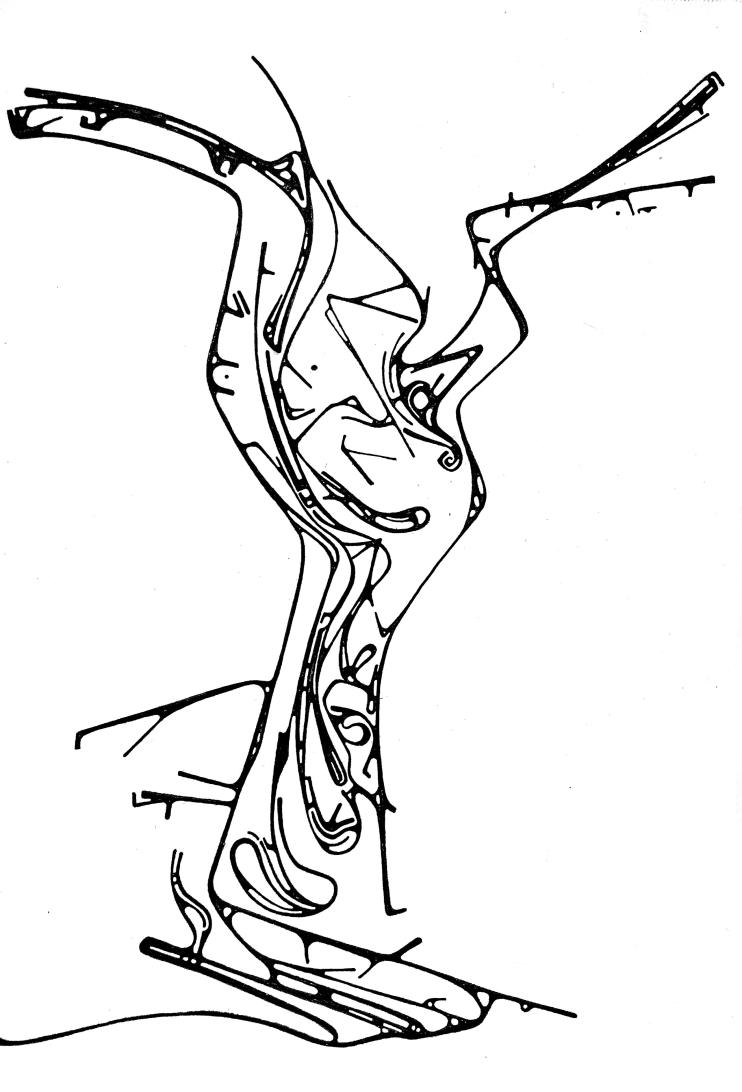Water Falling On Granite
Foreword to the Second Edition
This essay originally appeared in Creeker Vol 4, a zine that primarily focused on the Fairy Creek blockades of 2021. It has undergone substantial revisions and is now being put out as a standalone zine. Readers unfamiliar with the blockades need only understand a few key points of context. By the time people really started arriving to the blockades in big numbers and shaping it into what it become at the peak of the summer, it was a decentralized set of blockades made up of 6 or more different camps, some of which described themselves as semi-autonomous. Some were pop-up blockades that didn’t last more than a day or two of police enforcement, some were fallback blockades for when frontlines fell. Waterfall Camp in particular was a frontline camp for months of steady police enforcement, until the police suddenly changed strategy and started enforcing against longstanding blockades on the other side of the mountain (up different logging roads). This was a major turning point in momentum, as Waterfall had held relatively strong, yet the blockades newly receiving enforcement lost ground quite quickly. As that side of the mountain was eventually cleared out, other strategies emerged until things quieted down in the winter. Through many conversations, the leadership styles of many camps were considered in writing this piece, though Waterfall Camp is examined most closely and explicitly. The official social media accounts of the blockade tended to portray the blockades as Indigenous led, but this is a complicated claim that was at times somewhat true and at other times particularly untrue.
The most substantial revision from the first edition is to rewrite sections that were setting up a good hierarchy/bad hierarchy distinction, whereas this time around, thanks to the feedback received, I’d added more nuance and changed the language.
For more background, see A Basic Timeline of the Blockades and Blockade Map in Creeker Vol 4, though there are many essays throughout the zine series that give a more in-depth feel of that struggle, some of which are at odds with the perspective this essay puts forward. All volumes of Creeker can be downloaded at creekerzine.wordpress.com

Second Edition Sept 2023
Originally published May 2023
Anti-Copyright
creekerzine.wordpress.com for digital versions
westfall@riseup.net
Original illustrations by Wauzhusk
Water Falling on Granite
Deference Politics, Indigenous Leadership, and Anarchist Relationality
One evening at the Fairy Creek blockades I decided to hike into the area that was once River Camp. At that point in time, nothing remained of the camp except some debris and evidence that a grader had been working on the road. The blockades on Granite Main had held for 5 months, but the cops were now able to continually patrol all the way to the cutblocks at Heli. Consequently, the blockade strategy was shifting to bush camps and pop-up actions as everyone that remained was spread out in the woods to avoid being seen on the roads. Communication between groups was a challenge; it was hard to tell exactly what was going on. Logging seemed imminent. Before heading out at dusk to hike in, I was introduced to a few Indigenous people who were visiting from their own distant traditional territory. 1 They had been to the blockade previously and had just returned that day. I was asked to accompany them as I had been given beta on how to navigate a possible new route. It took us until the middle of the night but we made it to our destination, having managed to elude police attention. We parted ways and camped separately.
The next morning, I was able to find some land defenders keeping a low profile in the forest, well off the road. When I mentioned who I’d hiked in with, the reply I got was a very earnest “Oh great, that means we have Indigenous leadership now!” I was puzzled by this and didn’t know how to respond. Eventually, I interpreted their comment to mean that they didn’t know what to do in the current state of affairs, and wanted someone else to have all the answers.
Another Fairy Creek land defender, who wishes to remain anonymous, shared this experience from being on a frontline:
Once word got around to a few people that I was Indigenous, people were
like, “What do we need to do? What kind of ceremony?” I was like, don’t consult me on how to do things “in a good way” just cause I’m Indigenous. I might as well be a settler here, I haven’t a fucking clue. Oh, actually, I do know a good way to do something: drop the witchy woo-woo tone, grab a breaker bar and help us dig. And if you don’t want to do that, please just find us some tobacco. But stop putting me on a pedestal, it’s dehumanizing.
Introduction
Building the types of relationships needed to sustain ourselves and advance anticolonial struggles is hard and messy work. Intersectional and anti-oppression perspectives offer insight on unpacking the ways that oppression is reinforced not only by the mega-institutions of church, state, and capitalism, but by all of us in our daily lives. Understanding the perspectives of those we struggle alongside, especially those who experience different forms of marginalization and oppression, has the potential to transform our personal relationships and the potential of land defense struggles.
In building individual connections based on respect and reciprocity, it is vital to be both aware and critical of the power relations between the different social positions we occupy. One important way this gets put into practice in movements is by making sure that marginalized voices get heard. However, this laudable tenet can be distorted into an authoritarian ideology when it is used to claim that the most-oppressed people should be leading collective struggles, and that identity categories should be the defining criteria for this kind of power. While this would certainly be preferable to movements being led by those least affected by oppression, I challenge these hierarchies, including the assumption that someone needs to be in charge. 2 I argue that these power structures actually perpetuate some of the very systems they claim to dismantle. By painting a morally-palatable veneer onto alternative power relations, the possibilities for more authentic relationships within our lives and our movements are greatly diminished. As there are no widely agreed -upon terms for this style of activism, I will be referring to it as deference politics. 3
Deference politics inherits colonial power relations of representational politics and deference to authority. Like all prescriptively applied ideologies, it is rigid and dehumanizing. Instead of working to transform settler guilt into something healthy and sustainable, it is instead manipulated, leading to the preservation of behaviors that tokenize, exoticize, and essentialize Indigenous peoples.
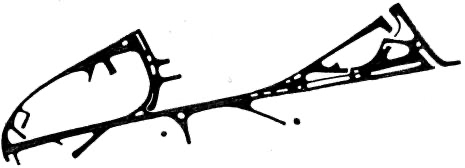
There have been excellent pieces written criticizing the inherent authoritarianism of this particular way of constructing hierarchy, 4 but little has been written on how deference politics actually projects colonial assumptions onto anti-colonial land defense struggles. An anti-authoritarian perspective does much to combat these hierarchical pitfalls, but if based solely on a Eurocentric analysis of power, it is incomplete. Combining anti-oppression analysis with a better understanding of Indigenous sovereignty while also focusing on more liberatory interpersonal relationships holds promise. It also raises new questions.
Half-Baked Expectations of Leadership
The project of politicizing Indigenous identity produces Indigenous actors assuming roles in a political theatre that ultimately alienates our autonomy. But if we study civil movements, this is apparently how we qualify for solidarity.
Klee Benally
Settlers frequently bring their own unexamined colonial expectations of power into anti-colonial struggles, often based more on preconceived notions than longstanding Indigenous practices. The spectrum of leadership practices within Indigenous communities is broad. 5 Even within a given nation, there can be multiple forms of leadership practiced across space and time, sometimes even changing season to season. Any casual attempt to draw lessons from Indigenous peoples, devoid of the context of each specific nations’ practices, is inadequate and functions as yet another practice of extraction. Impositions that disregard actual Indigenous traditions of collective decision making are a core part of the colonial project. A prime example of this is the assumption that an Indigenous person in a colonial position constitutes Indigenous Leadership, whether it’s Indian Act band councils or the Green Party of Canada. 6 An Indigenous person being in charge does not magically make something decolonial.
Facing a disconnect from community and land, it is not surprising that many settlers turn to Indigenous cultures in search of spiritual, practical, and strategic guidance. But these yearnings, combined with settler culture’s lack of experience with non-colonized institutions of mentorship, can unwittingly invite the kind of shallow Indigenous representation that leaves the door wide open to grifters, “pretendians”, authoritarians, and even infiltrators and predators.7
There are many ways that settlers’ misguided expectations of leadership fail in practice, such as an expectation that an Indigenous person, any Indigenous person, even one who is living far from their own territory, should be the decision maker for a given group. This externalizing of existential responsibility places an unreasonable burden on those who may have no interest in making decisions for others. Even if they would accept such a responsibility, “it limits the agency of both the leader and the led. The leaders are left with the weight of logistical and strategic responsibility, unable to improvise and act in more creative ways” (Eugene).
When an Indigenous person has earned the title of aunty or elder within their community, it may confer varying degrees of leadership, but these titles imply relationships that cannot be taken for granted outside of that specific cultural context. After all, what knowledge do settlers have of “who vets, who screens, who filters people’s claims to be able to assume these positions of authority?” (Harp). Even if they are a matriarch or a hereditary chief, affording someone an unquestioned following shirks the responsibility of building relationships based on a shared understanding and participating in collective decision making.
Elements of Hierarchy at Fairy Creek
Leadership was continually in flux at the blockades, taking many forms. Some leaders were Indigenous, some not. Some were hands-off and encouraged everyone’s autonomy, with no interest in establishing a hierarchy or dominating others, while others assumed a top-down fixed position. Some led by claiming to be an authority, while others claimed to act as proxy for such authority. Some leaders genuinely earned respect from those they worked with, while others merely filled a position left open by a general belief that there should be a leadership role with an Indigenous person filling it.
There are many different leadership qualities, but to name a few: confidence, taking the initiative, interpersonal skills, being articulate, dedication, staying calm under stress, etc. People exhibiting these qualities often gain the respect of those they organize with, without any hierarchical implications. It is the beliefs and practices of the group around the question of autonomy that determines whether leadership crystalizes into leadership roles.8
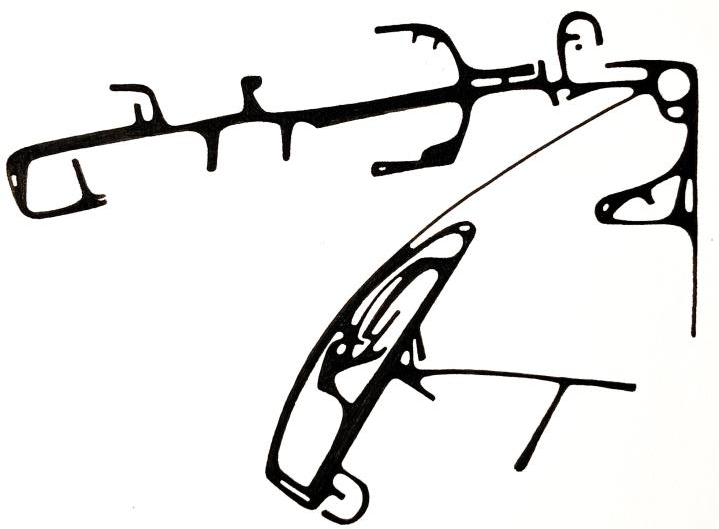
We can contrast the fixed-leadership hierarchies that existed at various times and places at Fairy Creek with the more organic leadership style that was practiced at Waterfall Camp. New arrivals to the frontline intensity of Waterfall 9 were often quick to realize they were out of their element. Yet while many aspects of the camp were always in flux, there were people who had been around long enough to develop a complex understanding of the many variables: geography, ebb and flow of police enforcement, supply chains, how to build hard blocks, what strategies had been tried so far, how to keep track of all the moving parts, etc. Consequently, these people’s opinions had influence based on their knowledge, continual efforts, experience, reliability, and level-headedness, ie leadership qualities. Leadership without leadership positions.
Strategic decision making at Waterfall consisted of careful deliberation and consensus. This process was only open to those that had organically emerged as leaders, but rather than being static group, it was an ever-changing process of selforganization, as new people proved their leadership qualities and others took breaks. While strategy meetings were closed, anyone who wished to participate in the resulting action plans would be brought into the loop after a plan had formed. People could also carry out their own plans, though it was suggested that they seek feedback from the more experienced people, since so many tactics had already been tried over the months. Starhawk’s description of Pacesetters is spot on:
In a crisis, when a deadline looms, when we need to put shoulder to the wheel and work round the clock to get the job done, a good Pacesetter inspires by example. She does more than just manage and drive the work; she gets her own hands dirty, digs in and does it. Bouts of Pacesetting frenzy can energize a group and get it through moments of crisis.
Was Waterfall informally organized as a voluntary hierarchy? Or was autonomy always possible, just unfamiliar and perhaps undesirable for those who preferred to go along with whatever plan emerged? Isn’t voluntary hierarchy antithetical to autonomy? Regardless, while it wasn’t based on dominating others, it is fair to question the potentially coercive aspects that did crop up, such as the ways that personal charisma factored in and how consent practices weren’t always optimal.10
For the final two months that Waterfall was the frontline, desperation never really took hold despite round-the-clock police presence. Would-be leaders on the Granite Road side (HQ and River) however, lacked exposure to police enforcement and desperation quickly spread there once the police changed their direction of attack and Granite became the frontline. Despite arguably being the most qualified to bring calm and strategy to Granite, Waterfall’s leaders were not well known on that side of the mountain and in the ongoing panic they simply weren’t listened to, at times directly clashing with the leadership styles more common there. It was a frustrating lesson and left some egos bruised, but Waterfall’s leaders did not have the necessary relationships to be leading people outside of the context where that leadership had taken form. The respect that had previously empowered them to lead had been lost in translation.

Hierarchies that positioned Indigenous people as the ultimate decision makers could be found at various times and places at Fairy Creek. Factors that enabled such hierarchies included a belief in fixed leadership roles, ill-conceived notions of Indigenous leadership, manipulation of settler guilt, and certain Indigenous people embracing leadership positions, or at least being complacent with being put in such a position.
In considering the impacts of deference politics in different types of hierarchies, there was one other factor that should not be underestimated. During the peak of blockade activity that summer, any conflicts playing out on social media or in group threads were easy to ignore. Most people who were physically at the blockade weren’t paying attention to anything online. As more people returned to civilization for short breaks and the number of days where there was an active blockade decreased (leaving those that remained on the ground with more downtime), they started becoming aware of the ongoing blockade-related in-fighting that had been happening online. These internet arguments and denunciations consistently proved to be more destructive examples of deference politics than anything happening at the actual blockades. Even though nearly all the worst exchanges took place online, they increasingly had a demoralizing effect both on the people still on the ground, as well as those who had gone home for a rest and were considering whether or not to head back to the blockades. Confidence was sapped, a fear of lateral hostility grew, and there was a decreased willingness to voice dissenting opinions.
As time went on and many of the camps were wiped out, the options in these Choose Your Own Adventure blockades became limited. People ended up stuck at camps with dynamics they found frustrating (such as deference politics), and their only options were to try to endure or to go home. The strategic plans coming out of this more centralized approach simply didn’t benefit from the same sort of rich, deliberative collective process that had helped hold ground for so long at Waterfall. Many came to believe that they no longer had a voice in decision making, regardless of the experience they had gained in acting “semi-autonomously” over many months at the blockade.11

The problem with the hierarchies at Fairy Creek that were based on deference politics was not that Indigenous people were in leadership positions. The problem was that there were leadership positions at all, in this case enforced by a social context that took advantage of settler guilt, transforming it into an authoritarian weapon of shame. This so-called “Indigenous Leadership” was based less on respect for the individual at the top and more on essentializing the social category they represented. Oppressed peoples often have important insights and experiences worth listening to, and there were many opportunities for settlers to learn from various Indigenous elders throughout the blockade, but marginalization and oppression are in no way necessary or sufficient predictors of leadership qualities.
Maintaining domination 12 need not rely on the power of those at the top, it can also be enforced by the willingness of its participants to ensure conformity. In the context of deference politics, creating and maintaining a power-over apparatus is partially accomplished by conditioning one’s peers into compliance through a logic of punishment that threatens shame and exclusion against those that speak up. Frequently though, one of the driving forces of deference politics are activists that see other people as a means to secure their own advantageous position in a power structure, rather than understanding each person as an end unto themselves. It should be no surprise when their practice consists of building their own social capital at the expense of others. Many strong advocates for deference politics seem to be young, middle class university students looking to transfer their class position and privilege into their activism. Installing oneself in a middle management position in this type of power structure bears a strong resemblance to the politicians of the prevailing order who also base their careers on false claims of representation.
Feedback Loops
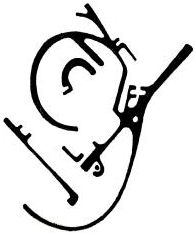
Power tends to concentrate, and even the most benevolent and empowering leader may unconsciously begin to hoard power over time. When power becomes permanent and static, the group often stagnates.
Starhawk
A defining feature of hierarchy is not only the reduced influence of lower status people, but the personal risk to anyone who questions those who are in higher positions of power. People bite their tongues, those at the top remain out of touch, and a feedback loop ensues. This basic separation dooms its asymmetrical relationships to inauthenticity, dishonesty, and resentment.
Putting a marginalized person on a pedestal is racist, dehumanizing, destructive to group dynamics, and reduces people to a singular aspect of their identity. Positioning someone as an authority in this way, sometimes without them even consenting to that position, stifles possibilities for meaningful collaboration and reciprocal accountability. When movements lack relationships strong enough to handle friction within the group, “fear of conflicts causes problems in itself, with hesitation breeding inappropriate levels of deference” (Barker/Pickerill). One of the ways this excessive deference comes up is people who “seek power, not by achievement but by association”:
They attempt to get close to powerful people, hoping some of that charisma will rub off and that they will gain respect by association. We all get a bit of a thrill from connecting to someone we admire… But some people seek contact and favor from the powerful as a means to gaining power themselves. Such behavior can be destructive to the group, because it decouples power from responsibility and creates channels of power that are not open or transparent. Vicarious power-seekers are also dangerous to the people who hold power. Sucking up is also sucking out, and it can drain energy and attention. The more power you accrue, the more you must fend off people’s projections and assumptions – and that gets exhausting. While you seem to be in the center of the spotlight of attention, you may actually feel very invisible as a real person.
Starhawk
Sucking up has other unforeseen consequences. When settlers always say yes and never disagree with Indigenous people in leadership positions, there is less space for any critical Indigenous voices that are present. In addition, people already on the fringe are further marginalized if they aren’t well accustomed to activist norms of what is considered proper language and etiquette.
Non-natives often choose which Indigenous voices to privilege by defaulting to Indigenous activists they determine to be better known, easier-to-contact or “less hostile.” This selectivity distorts the diversity present in Indigenous communities and can exacerbate tensions and colonially imposed divisions between Indigenous peoples.
Walia
The Ally-Ship Wreck
In many instances a support role might indeed be the appropriate option for someone engaging in a particular movement, due to a variety of factors specific to either the individual or that particular struggle. It is only when models of allyship are predicated purely on service, where settlers are expected to participate solely as supporters and never as full accomplices, that this becomes problematic. Such separation leaves little space for reciprocal relationships. Sometimes this resembles charity, sometimes a cult.
Liberal activism keeps its aim low, merely trying to get a bigger piece of the pie for the excluded. It’s ambitions are partial, its understanding of power relations incomplete, compounded by its own unintentional othering that reduces to an abstraction those it claims to be in solidarity with. It seeks solely to mend institutions of colonial power in order to better include everyone in the democratic task of self-destruction and ecocide. A system built on dispossession will never allow more than crumbs of decolonization.
Deference politics is based on a form of domination that inadvertently reproduces extractive logic by using people for their identities, reinforcing binary thinking in the process. It is not only bad politics but, like liberal activism, it becomes another empty struggle by mirroring the systems it wishes to dismantle, further entrenching the status quo in the process.
It is imperative that we acknowledge the impact of oppression within systems of domination. When members within a group have unequal access to power, this changes how they show up, including whether they show up at all. Too many movements of the past have failed to take into account the voices of the most marginalized, while other movements have promoted listening without any expectation for meaningful relationship building. This reduces the agency of each group member into pre-assigned roles, such as saviours and victims, instead of potential collaborators.
Let us be done with trying to grow the quantities of comrades without attending to the quality of our relationships to one another, and to whether we’re acting as we wish to act.
An Uprising and its Deferral
Relationality – Kinship, Friendship, Affinity
In pursuing relationships that undermine the separations instilled by colonial social conditioning, deference politics is not the only hurdle. Anti-authoritarian perspectives can bring a balance to land defense struggles, provided they are grounded in anti-oppression analysis, but even so, there remains the general tendency of settler culture to project itself onto Indigenous practices. 13 For example, settlers lacking an understanding of traditional Indigenous leadership often question the seeming hierarchy of hereditary chief governance models, as this is often an unfamiliar and easily misunderstood practice to them. Understanding the potential conceptual overlaps, and disagreements, between settler land defenders and Indigenous cultures is important. Given certain “ethical commitments and strategic commonalities, it appears possible and preferable to (re)create relations that sustain differences, rather than trying to deny or eliminate them” (Lasky).
There is undoubtedly a contrast in how anti-authoritarians and some Indigenous peoples conceptualize leadership. The former tends to have a ‘don’t tell me what to do’ allergy to leadership, while for the latter, respect for elders can be a fundamental cultural value. These values may seem incompatible at first glance, but “the lack of coercive power in traditional Indigenous political structures circumvents many anarchist objections to government and nationhood” (Barker/Pickerill). For many Indigenous nations, relations lacking domination “were the norm, wherein authority was not exercised through force… but through exemplary conduct, oratory skill, and according to traditional protocols” (Lasky). However, in understanding the ways that some indigenous nations eschewed hierarchy, we shouldn’t deny that there were nations that did have more hierarchical traditions, nor should we assume that we can always spot the difference:
Of course, some forms of Indigenous government can also be read as inherently hierarchical. This reality may cause tensions between anarchist values such as reciprocity, respect, dialogism and flexibility of authority: these may exist simultaneously with seemingly ossified forms of domination and class oppression. However, in countless Indigenous contexts, these forms of governance are structured in ways meant to be consistently re-invigorated, negotiated, and challenged through ceremony – rather than as the static modes of hierarchy often wrought by colonial interventions.
Kauanui
A land defender who wishes to remain anonymous offers this:
Non-hierarchical relations are not easily perceived by outsiders of Indigenous communities. The practice of, and value placed, on nonhierarchical relations are often embodied in subtle expressions/ceremonial times/daily practices/ways of being on the individual/family level. These are more/less unspoken, inherent traits and aren’t usually obvious to the outsider looking in. And of course, within the communities, there’s variation of this within families. Some participate in their own colonization, others actively resist every day in small ways. For the most part, these ways of being go unrecognized.
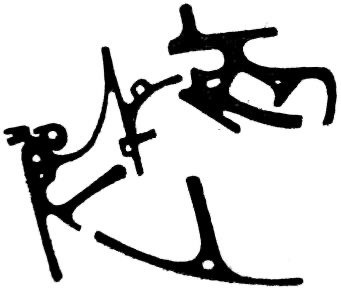
What kinds of relationships form the strongest decentralized resistance communities? Some writers have urged anti-authoritarian settlers to grapple with Indigenous realities of relationality in order to “alter their basic practices of solidarity and affinity with respect to Indigenous communities… by pursuing deep understandings of place-based relationships” (Barker/Pickerill). Indigenous relationality has been defined as being in reciprocal, consensual, and sustainable relations with all the natural world, including humans, land, plants and animals.
When it comes to relationships between people, Indigenous relationality places the basis of community within extended family ties. Anti-authoritarians however, often locate the basis of community within friendship and affinity, frequently as a reaction to their negative experiences with families of origin. Some indigenous and non-Indigenous anarchists have pointed out that family ties tend to form stronger bonds than any based on voluntary association, 14 though many queer folks would argue that kinship is a more useful framework than (bio)family.
Many land defenders at Fairy Creek underwent the type of intense bonding that occurs among those who endure extreme experiences together. Perhaps this creates a type of hybrid relationship based on combined elements of family, friendship, and affinity. What other family-but-not-family relationships could be experimented with to inform an anarchist relationality?
The challenge for anti-authoritarians “is to find their own new way of looking at – and being in – place that compliments but does not replicate what Indigenous peoples are attempting to do. Replication of relations, as with appropriation of voice, is an unwelcome and unneeded imposition… We can never exist in the Indigenous part of place-based networks, but we can interact through the network as separate, respectful, and vitally inter-dependent elements” (Barker/Pickerill).
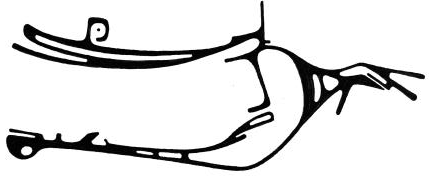
Permission is Complicated
Indigenous people are a small minority in Canada overall, often even on their own territory. Many settler land defenders do not have personal relationships with local Indigenous people, especially with modern segregation intensifying this separation. It’s not like someone can just post an ad online looking for accomplices. This is a tough bind, where settlers interested in exploring overlapping affinity with Indigenous people often can’t find opportunities to do so. 15 Without these relationships, it becomes hard to ethically navigate taking action on Indigenous territory.
Some activists prioritize seeking permission from local nations before engaging in disruptive public actions. Yet, there frequently seems to be no difference between seeking permission and cherry-picking, in which case the value of such token permission is that there has been a modicum of communication rather than none at all. Nobody seems to ask permission to live on stolen land or to go to work in a capitalist economy. Furthering the cycle of colonization and resource extraction is built into our daily lives. It seems that only when someone suggests disrupting the status quo that people suddenly want to consult with protocol. This leads to a sort of gatekeeping where everyone who does not have the necessary relationships feels paralyzed. There needs to be other choices besides zero action and action only on the condition of permission gained by tokenizing Indigenous people.16
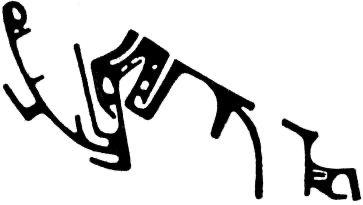
In navigating permission, it can be useful to parse out how the differences between anti-colonial actions and decolonization might lead to a more informed practice that increases options for action. For our purposes here, I would define “anticolonial action” to mean action that either intentionally, or incidentally, destabilizes colonial logistics, perhaps even if the action isn’t explicitly anti-colonial. Within land defense, this could mean, for instance, pushing state and industry off the land, such as defending old growth forests. Contrast this with defining “decolonization” as a process that repeals the authority of the colonial state and re-centers Indigenous land-based cultural practices in a way that directly increases Indigenous sovereignty. 17 There is a rich history of Indigenous people actively engaged in cultural resurgence and land defense on their own territory. In these cases, intact traditional Indigenous leadership practices often form an integral part of the landscape. Settler involvement in those struggles necessarily depends on building close relationships with local Indigenous people, becoming familiar with protocol, and sometimes, accepting a support role.
Given the distinction, decolonization is always anti-colonial but anti-colonial actions aren’t always decolonial. Yet when all anti-colonial actions are expected to be fully decolonial, this chokes off many possible actions that could otherwise be complementary. An informed perspective recognizes the spectrum between the two and how one requires more close relationships with and permission from local Indigenous communities than the other. At their best, anti-colonial actions create space and possibility for decolonial efforts to occur. Ideally, settlers can take stock of how open they are to doing support work and their own relationship networks, then exercise agency in deciding how and where to act. This decision could be based on a sense of humility, consideration of what range of actions is appropriate, and always seeking to increase their understanding of local Indigenous place-based relationships and struggles.
Conclusion
Deference politics claims the path to justice (a very questionable concept in and of itself) requires putting oppressed people into positions of power. Yet attempts to invert the usual colonialist identity pyramid within would-be radical spaces only refurbishes coercion and hierarchy. How can blindly following someone that you don’t have a close relationship with lead to anyone’s liberation? Subversive alliances based on organic relationships are far more promising than prescriptive spectacles of allyship. We can choose, each of us, to prioritize mutually-nurturing “intimate relationships of reciprocity, humility, honesty, and respect” (Simpson).
Settlers wishing to be in alignment with anti-authoritarian principles and still be in solidarity with Indigenous struggles have their work cut out for them. Coming to terms with personal colonial baggage, building better relationships, and being mindful of the types of hierarchies we participate in is a long term commitment. Yet even when the types of relationships being sought elude cultivation, there still needs to be the possibility for action.
Inevitably, in trying to navigate all these considerations, “there will be difficulties and failures in attempts to find the role of anarchist [practice] in these relational networks of place; that is why it is important to pursue relationships with the ethic of radical experimentation firmly in mind. Settler anarchists must in part be willing to transcend activist spaces and identities, to seek creative alliances, to literally ‘give up activism’. There is no perfect way to engage in solidarity with Indigenous communities, to understand networks of place, or pursue decolonization” (Barker/ Pickerill).
As Tawinikay says in Reconciliation is Dead:
You are not just cogs in the solidarity machine, you too can take up struggles… you can fight parallel battles towards the same goal… Don’t romanticize the native peoples you work with. Don’t feel that you can’t ever question their judgment or choose to work with some over others. Find those that have kept the fire alive in their hearts, those who would rather keep fighting than accept the reconciliation carrot. Don’t ever act from guilt and shame.
And don’t let yourself believe that you can transcend your settlerism by doing solidarity work. Understand that you can, and should, find your own ways to connect to this land.
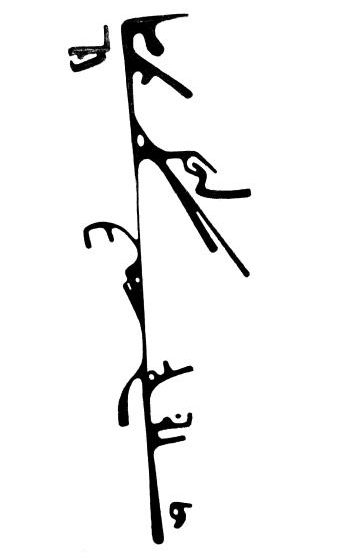
Please send any feedback or correspondence to westfall@riseup.net
Footnotes
1 Name of nation left out in consideration of privacy.
2 It is beyond the scope of this essay to offer a thorough critique of leadership roles, ie leaderism. But to add to a general anti-authoritarian critique, it is worth pointing out that what people say and what they do are two different things and that having a singular point of failure will be leveraged by the state.
3 The common but unsatisfactory term for this is ‘identity politics’. It means quite different things to different people and its meaning has changed over time and place. Instead, I have borrowed the term ‘deference politics’ from the zine Affinity Fraud and Exploitable Empathy.
4 While I value the critiques offered, they are often so scathing that they’re either missing a lot of nuance or they are preaching to the converted. One zine that actually strikes a balance and builds some bridges is Lines in the Sand.
5 My own understanding of just how broad these range of practices are was greatly expanded from reading The Dawn of Everything. Another shorter example is Indigenous Anarchic Hierarchy. A more local recommendation is Secwepemc People, Land, and Laws.
6 After all, the C-IRG unit of the RCMP is headed by an Indigenous person, Gold Commander John Brewer.
7 There has been a pattern of undercover cops posing as marginalized and oppressed people in order to evade scrutiny within movement spaces. See Courage Confidence Connection Trust, Toronto G20 Main Conspiracy Group, Damage Control, and How an Undercover Colorado Springs Police Officer… These tactics and other tactics of people manipulating collective principles for personal gain are explored at length in Affinity Fraud and Exploitable Empathy.
8 See Footnote 2
9 All descriptions of Waterfall here are confined to the period from early June 2021 until the HQ raid in early Aug 2021
10 Regarding consent, there were a number of women in leadership positions at Waterfall that can be credited for making sure consent was a part of the culture there, but there were still shortcomings. If we take the consent qualifiers of ‘free, prior, and informed’ and layer that onto frontlines that have severe time restraints, the fog of war, and a constantly changing environment, it’s fair to imagine people might feel socially pressured (often indirectly), or feel put on the spot without time to truly think something over, lacking all of the information relevant to make an informed decision, or that the expectations previously established allowing consent to be given might unknowingly and unexpectedly be violated. For other critiques of frontline dynamics that applied to Waterfall as well as other camps, see The Concrete Ceiling in Creeker Vol 2.
11 Indigenous people should have as much right as anyone to be wrong. Indigenous people can make all the call bad calls they want, just like non-Indigenous people can. What matters is how people decide who to listen to.
12 From A Nihilist Understanding of Social War: “Domination is an asymmetrical and fixed power relation, where individuals are repeatedly assigned to the same roles. Every social relation is a power relation to some extent. But it is only domination if there is a power imbalance that cannot simply be shifted or reversed, unlike the often dynamic nature of relationships of love or comradery. Domination sets the world a certain way according to the will of certain people. Domination can happen at a very small scale between two people, and it can also be systemized through the use of institutions with police forces and judiciary systems. These are systems of domination, which create entire cultures with norms, values, and desires that uphold them, along with technologies of domination that maintain and expand domination.”
13 “Anarchist analysis alone not protection against participation in dominating power dynamics.” (Barker/Pickerill) “Though there are important intersections between anarchism and indigeneity, there might also be a relationship between anarchism and settlement as well. And, if we acknowledge this is an uneasy relationship, then we need to ask more difficult questions, such as how anarchists have at times slipped into upholding the structure of settlement in the effort to advance anarchist politics” (Warburton). See also Decolonization is Not a Metaphor.
14 Gord Hill in Indigeneity, Sovereignty, Anarchy and Aragorn! in Towards a Non-European Anarchism and Locating and Indigenous Anarchism. Sever in Land and Freedom: “It is time to forget about affinity. Those who currently call themselves anarchists tend to be the warriors and messengers of communities that do not yet exist… The concept of affinity has done enough damage. It is a thoroughly rationalist notion, based on the idea of sameness as prerequisite for equality, and equality as something desirable… What holds the group together is not affinity, but a collective project. Only amidst a generalized scarcity of trust and sharing does it become possible to confuse these two binding forces. The community, as a collective project, does not need affinity to hold together. What it needs is sharing, a common narrative, and above all, difference.”
15 For some settlers, exploring a relationship with the land comes easier, though this risks perpetuating the undermining of Indigenous relationships to land, an erasure that has always been part of the strategy of colonization.
16 While wanting a blanket indigenous endorsement of an undefined action in order to confer legitimacy is often problematic, I do want to acknowledge that there might often be a relevant protocol for these situations and that the consequences of disruptive actions on marginalized people should be taken into consideration.
17 There is something potent in refusing to use the term decolonization in the vague metaphorical sense that is common these days, instead reserving the term only to mean something literal like “Land Back”. This means finding different language to describe the things that decolonization has become a metaphor for. For the background on this, see Decolonization is not a Metaphor, though be warned that the deference politics in that essay are often insufferable.
References
- Hakan Geijer – Affinity Fraud and Exploitable Empathy. Zine. opsec.riotmedicine.net
- Peter Gelderloos – Lines in the Sand. Essay/zine. theanarchistlibrary.org
- David Graeber and David Wengrow – The Dawn of Everything. Book.
- Eepa – Indigenous Anarchic Hierarchy. Essay.
- Marianne and Ronald E. Ignace – Secwepemc People, Land, and Laws. Book.
- On an Uprising and its Deferral: Eugene Against the Police in the Summer of 2020. Essay on itsgoingdown.org Rick Harp – Unhealthy Healers episode of Media Indigena. Podcast. They also talk about selfelder-ization/popcorn elders.
- Courage Confidence Connection Trust: A Proposal for a Robust Security Culture. Zine/essay on itsgoingdown.org
- Toronto G20 Main Conspiracy Group. Zine. Sproutdistro.com
- Damage Control: The Story of How One Activist Group Kept Ourselves Safe and Strong in the Face of Movement Infilitration. www.infilitration.fail
- How an Undercover Colorado Springs Police Officer Tried to Entrap Leftists with Illegal Firearms Charges. Article. itsgoingdown.com
- Starhawk – The Empowerment Manual: A Guide for Collaborative Groups. Book
- Adam J. Barker and Jenny Pickerill – Radicalizing Relationships To and Through Shared Geographies: Why Anarchists Need to Understand Indigenous Connections to Land and Place. archive.org/details/barker-pickerill-radicalizing-relationships
- Harsha Walia – Decolonizing Together. Essay. Briarpatchmagazine.com (Despite overlapping on this point, her essay contains many of the sentiments I am pushing back against in in this piece.)
- Klee Benally – Unknowable: Against an Indigenous Anarchist Theory. Zine. indigenousaction.org
- Jacqueline Lasky – Indigenism, Anarchism, Feminism: An Emerging Framework for Exploring PostImperial Futures. Essay, archive.org/details/lasky-indigenism-anarchism-feminism
- J. Kehaulani Kauanui – The Politics of Indigeneity, Anarchist Praxis, and Decolonization. Essay. journals.uvic.ca/index.php/adcs
- Theresa Warburton – Land and Liberty: Settler Acknowledgement in Anarchist Pedagogies of Place. Essay. journals.uvic.ca/index.php/adcs
- A Nihilist Understanding of Social War: On Autonomy, Domination, Representation, Class War, and Identity. Essay. theanarchistlibrary.org
- Eve Tuck and K. Wayne Yang – Decolonization is Not a Metaphor. Essay. tinyurl.com/4n298nwe
- Alan Antliff/Gord Hill – Indigeneity, Sovereignty, Anarchy: A Dialog With Many Voices. Essay at journals.uvic.ca/index.php/adcs
- Aragorn! – Two essays: Towards a Non-European Anarchism and Locating and Indigenous Anarchism. theanarchistlibrary.org
- Sever – Land and Freedom. theanarchistlibrary.org
- Leanne Betasamosake Simpson – Land as Pedagogy: Nishnaabeg intelligence and rebellious transformation. Essay. tinyurl.com/2p8h5x8k
- Tawinikay – Reconciliation is Dead. Essay/zine. theanarchistlibrary.org
Further Reading
- Flower Bomb – An Obituary for Identity Politics. Zine. warzonedistro.noblogs.org
- Interview: The Standing Rock Evictions. Article and audio on crimethinc.com
- Noname – Honest Reflections on the Wet’suwet’en Struggle. Essay in No More City, Vol 1 at www.nomore.city
- Knowing the Land is Resistance. Website/zines about settler connection to land from a collective based in Ontario. knowingtheland.com
- Charred – Beyond the Ecology of Presence: Being Anarchists on Indigenous Lands. Essay in Creeker Companion Vol 1.
- Zig Zag – On the Question of Allies. warriorpublications.wordpress.com/2016/12/22/on-thequestion-of-allies/
How can blindly following someone that you don’t have a close relationship with lead to anyone’s liberation? Subversive alliances based on organic relationships are far more promising than prescriptive spectacles of allyship.
